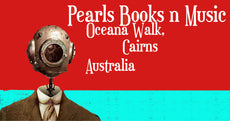
🔴 Condition - Good 🔴
Pictorial History The Hills District is the first book to cover the history of the whole shire and it contains 220 black and white photographs of the area. All the suburbs and localities are covered with detailed history of first white settlement in 1791 and its cultural impact on the way the area developed. After the Aboriginal occupation came the early white exploration of the area and the development of large land grants to emancipated convicts. The government reserve for farming was the destination of the Irish Vinegar Hill rebels who staged the 1804 uprising in the area. Fruitgrowing from the 1860s lead to the name of the shire as 'the orange bowl of Sydney'. Fruit and vegetables supplied the Sydney markets, carried by horse and bullock to the nearest rail station. Briefly the shire had a tramway which became a railway which was closed in 1932. As population expanded the area was serviced by private buses and trucks. Roads, bridges and tracks traversed the area and small mixed farms sprang up as the land was cleared. One hundred acre blocks became 25 acre blocks by the 1970s and the few remaining 5 acre blocks face pressure from residential development today. Rural backwaters of the 1980s are now fence to fence subdivisions. It is the fastest growing area in Sydney and the biggest shire, reaching from Wisemans Ferry to West Pennant Hills. John McClymont is the author of Parramatta a Past Revealed and Pictorial History Parramatta and District.
Translation missing: en.general.search.loading
